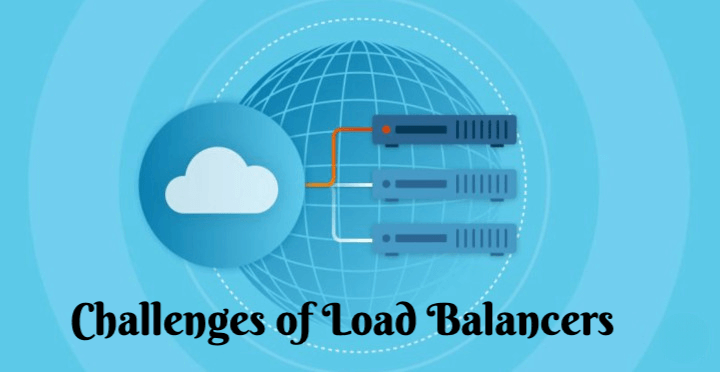Challenges of Load Balancers
In this tutorial, we are going to discuss about challenges of Load Balancers. Load balancers play a crucial role in distributing traffic and optimizing resource utilization in modern applications. However, they also face several challenges that need to be addressed to ensure their effectiveness and efficiency.

Some common issues associated with load balancers include:
1. Single Point of Failure
A load balancer, if not designed with redundancy and fault tolerance in mind, might become the system’s single point of failure. If the load balancer experiences an outage, it could impact the entire application.
- Remedy: Implement high availability and failover mechanisms, such as redundant load balancer instances, to ensure continuity even if one instance fails.
2. Configuration Complexity
Load balancers often come with a wide range of configuration options, including algorithms, timeouts, and health checks. Misconfigurations of Load balancers can lead to poor performance, uneven traffic distribution, or even service outages.
- Remedy: Regularly review and update configurations, and consider using automated configuration tools or expert consultation to ensure optimal settings.
3. Scalability Limitations
Load balancers themselves must be scalable to handle increasing traffic loads and growing numbers of backend servers. Ensuring that load balancers can scale horizontally and vertically to accommodate demand is a significant challenge, especially in dynamic and rapidly changing environments. As traffic increases, the load balancer itself might become a performance bottleneck, especially if it is not configured to scale horizontally or vertically.
- Remedy: Plan for horizontal or vertical scaling of the load balancer to match traffic demands, and use scalable cloud-based load balancing solutions.
4. Security
Load balancers are critical components of the security infrastructure and must protect against various security threats, including DDoS attacks, protocol vulnerabilities, and data breaches. Implementing effective security measures, such as access controls, encryption, and intrusion detection/prevention, while minimizing performance impact and ensuring compliance with security standards, is a constant challenge.
5. Latency
Introducing a load balancer into the request-response path adds an additional network hop, which could lead to increased latency. While the impact is typically minimal, it is essential to consider the potential latency introduced by the load balancer and optimize its performance accordingly.
- Remedy: Optimize load balancer performance through efficient routing algorithms and by placing the load balancer geographically close to the majority of users.
6. Sticky Sessions
Some applications rely on maintaining session state or user context between requests. In such cases, load balancers must be configured to use session persistence or “sticky sessions” to ensure subsequent requests from the same user are directed to the same backend server. However, this can lead to uneven load distribution and negate some of the benefits of load balancing.
- Remedy: Employ advanced load balancing techniques that balance the need for session persistence with even traffic distribution, or redesign the application to reduce dependence on session state.
7. Cost
Deploying and managing load balancers, especially in high-traffic scenarios, can add to the overall cost of your infrastructure. This may include hardware or software licensing costs, as well as fees associated with managed load balancing services provided by cloud providers.
- Remedy: Opt for cost-effective load balancing solutions, such as open-source software or cloud-based services that offer pay-as-you-go pricing models.
8. Health Checks and Monitoring
Load balancers must continuously monitor the health and availability of backend servers and route traffic away from failed or degraded servers. Implementing robust health monitoring mechanisms and failover strategies to maintain high availability without introducing single points of failure is a significant challenge, particularly in large-scale deployments.
- Remedy: Implement comprehensive and regular health checks for backend servers, and use real-time monitoring tools to ensure traffic is always directed to healthy instances.
9. Integration with Cloud Services
Load balancers deployed in cloud environments must integrate seamlessly with cloud-native services, such as auto-scaling groups, container orchestration platforms, and serverless computing platforms. Ensuring compatibility, interoperability, and performance optimization in cloud environments presents unique challenges due to differences in architecture, networking, and management.
Addressing these challenges of load balancers requires a combination of technical expertise, operational best practices, and continuous innovation in load balancer technology. By overcoming these challenges, organizations can leverage load balancers effectively to optimize the performance, scalability, and reliability of their applications and services.
That’s all about Challenges of Load Balancers. If you have any queries or feedback, please write us email at contact@waytoeasylearn.com. Enjoy learning, Enjoy system design..!!